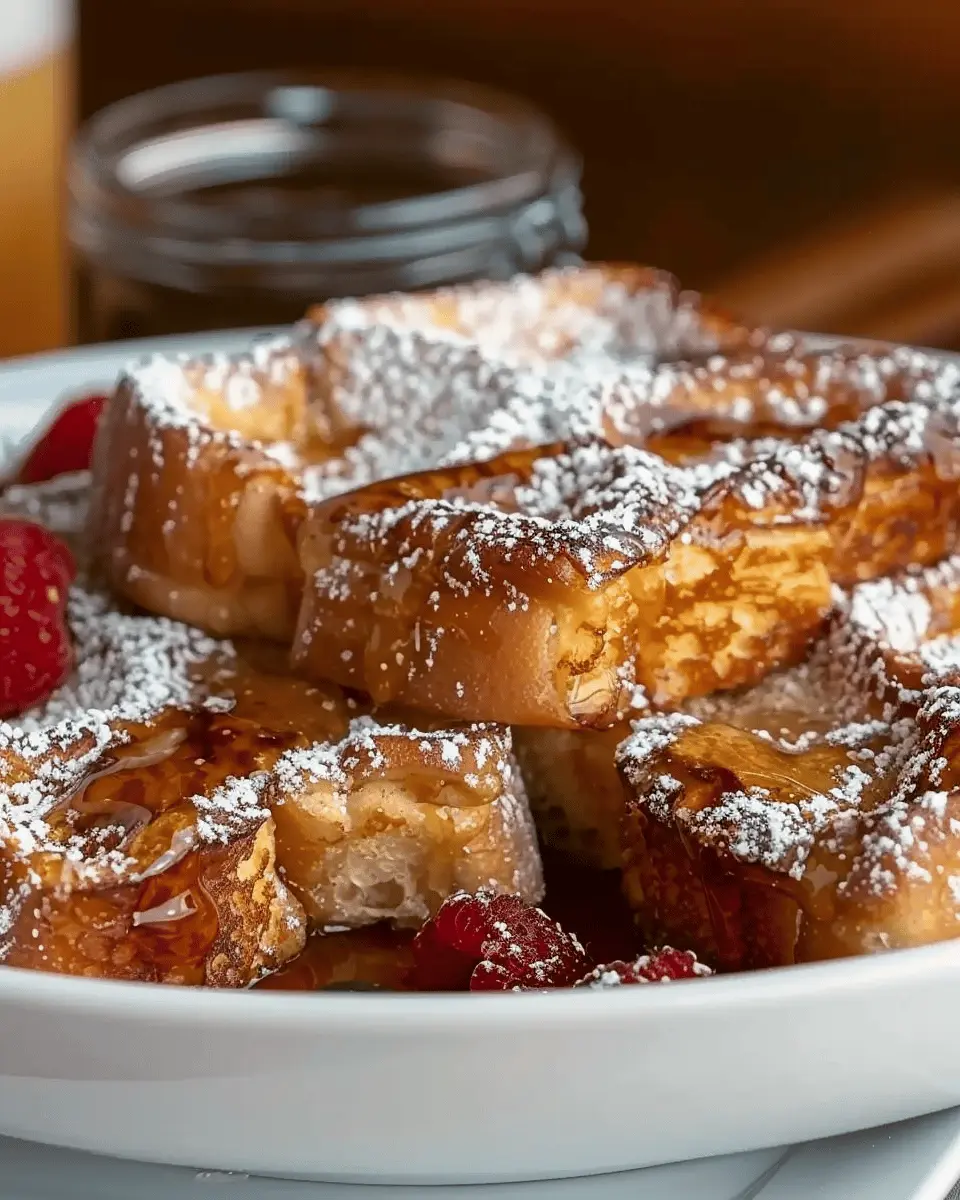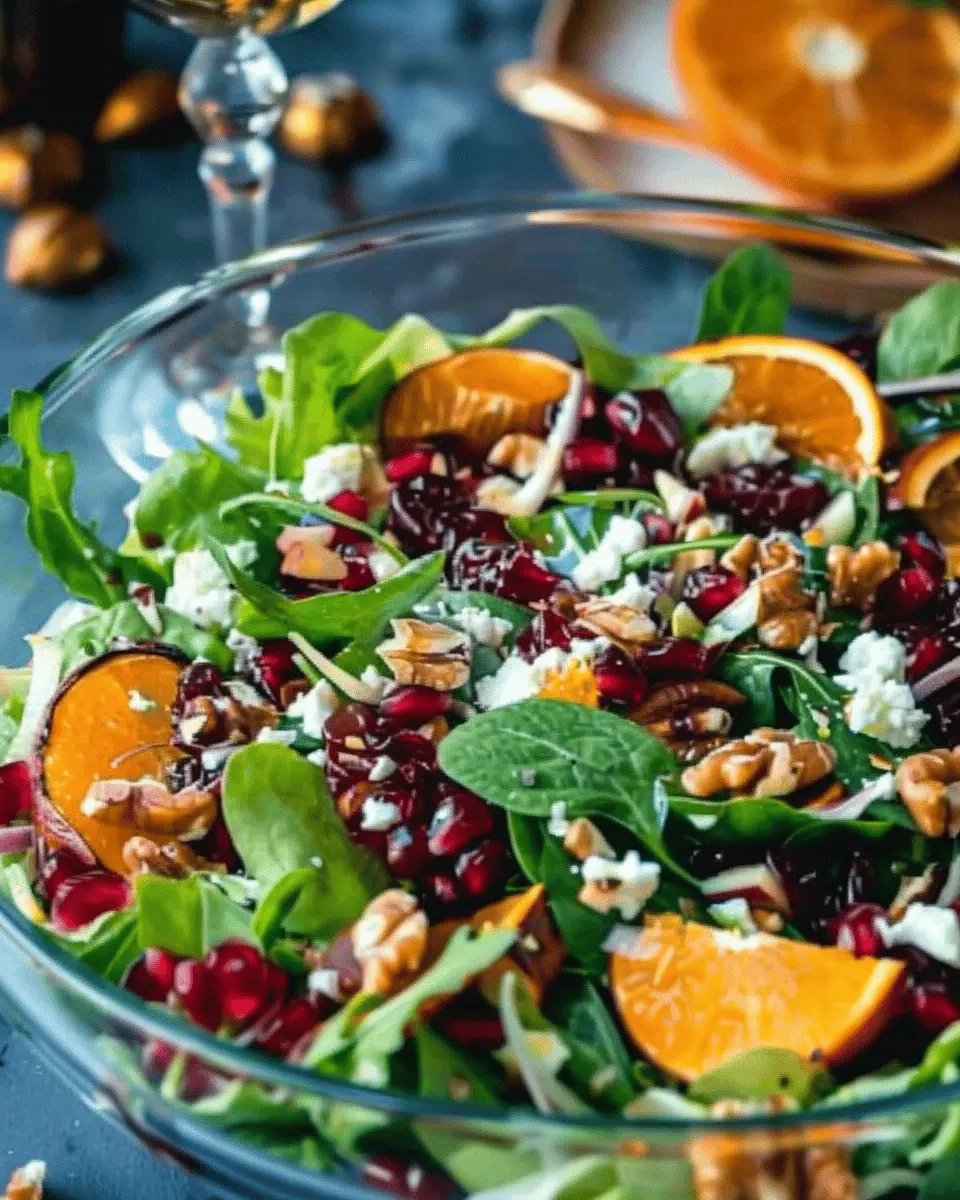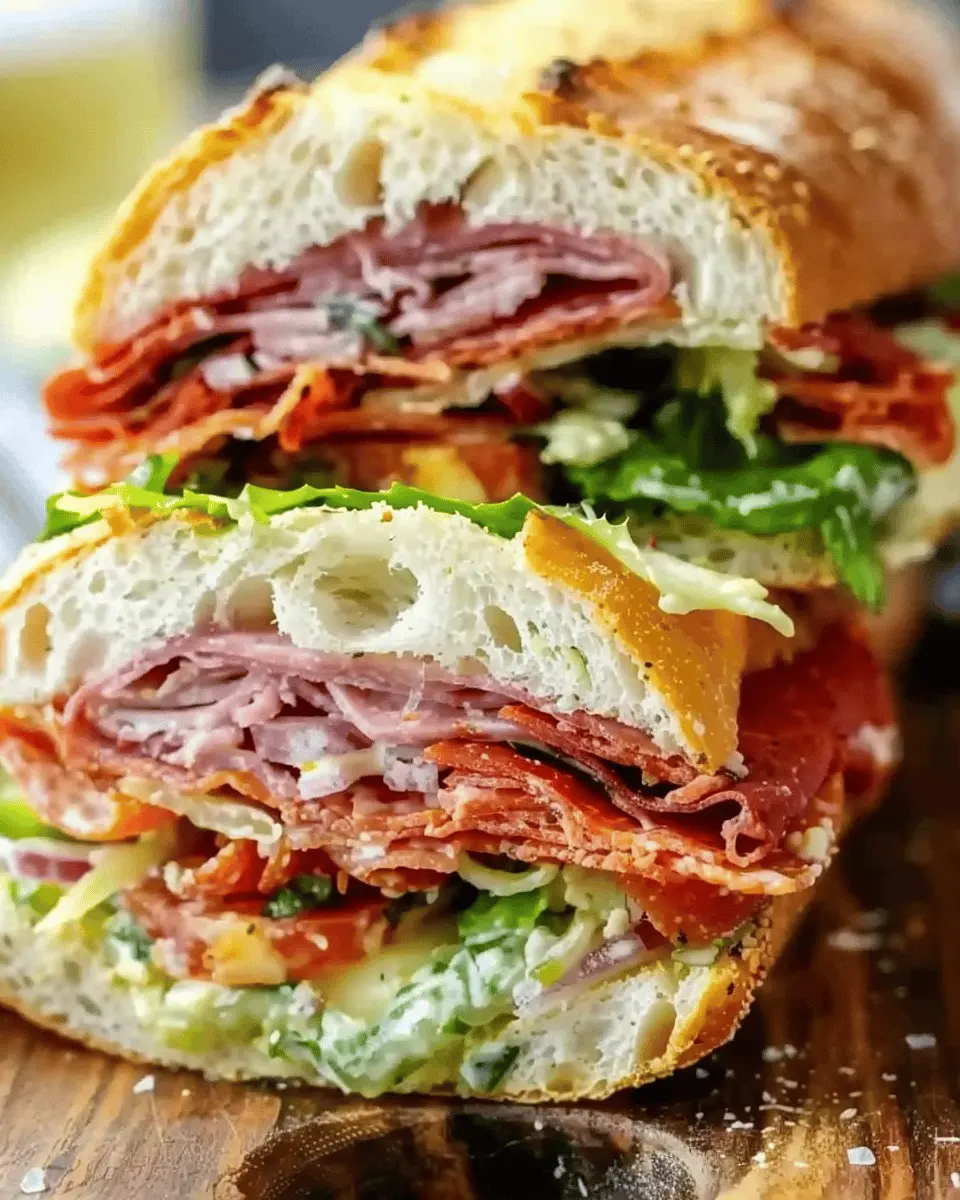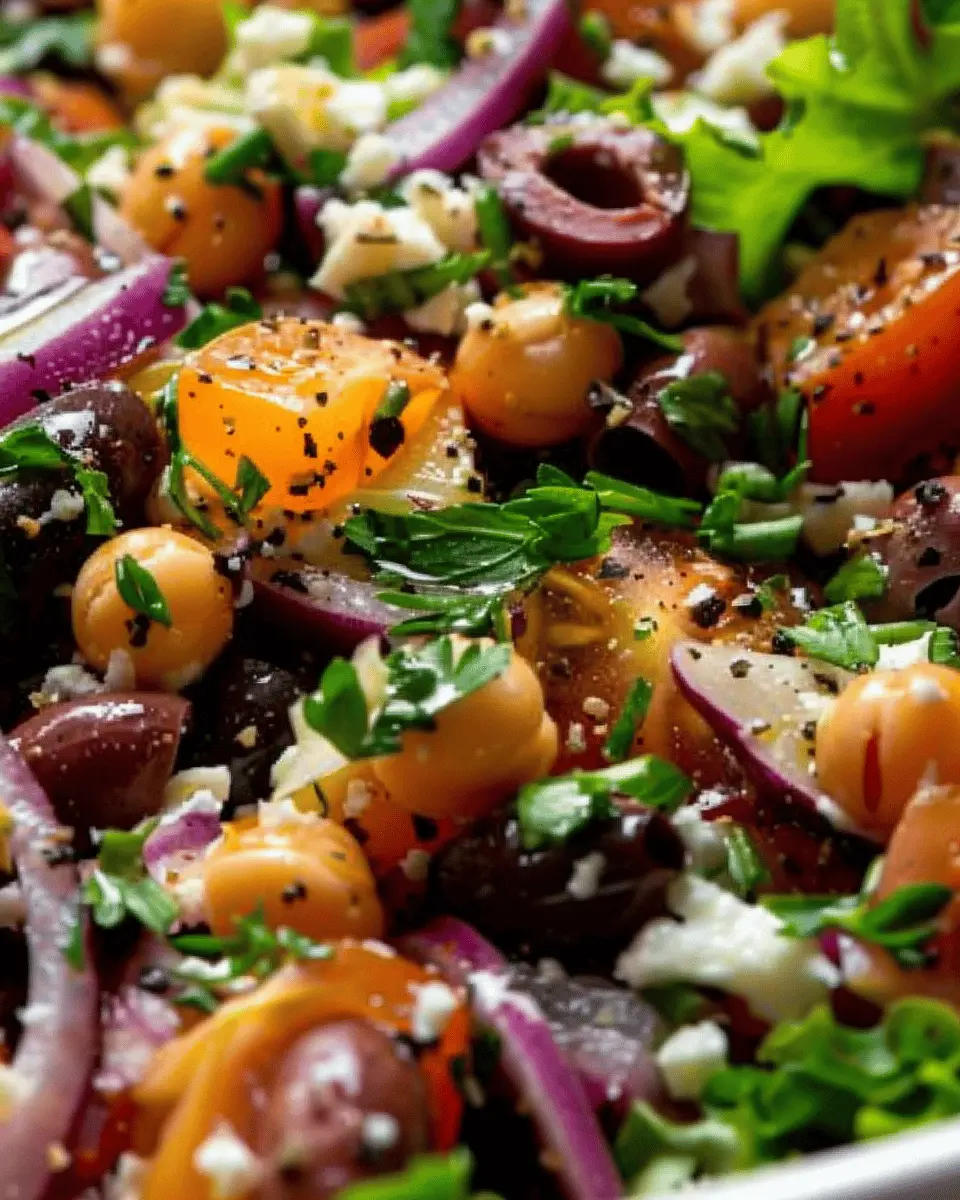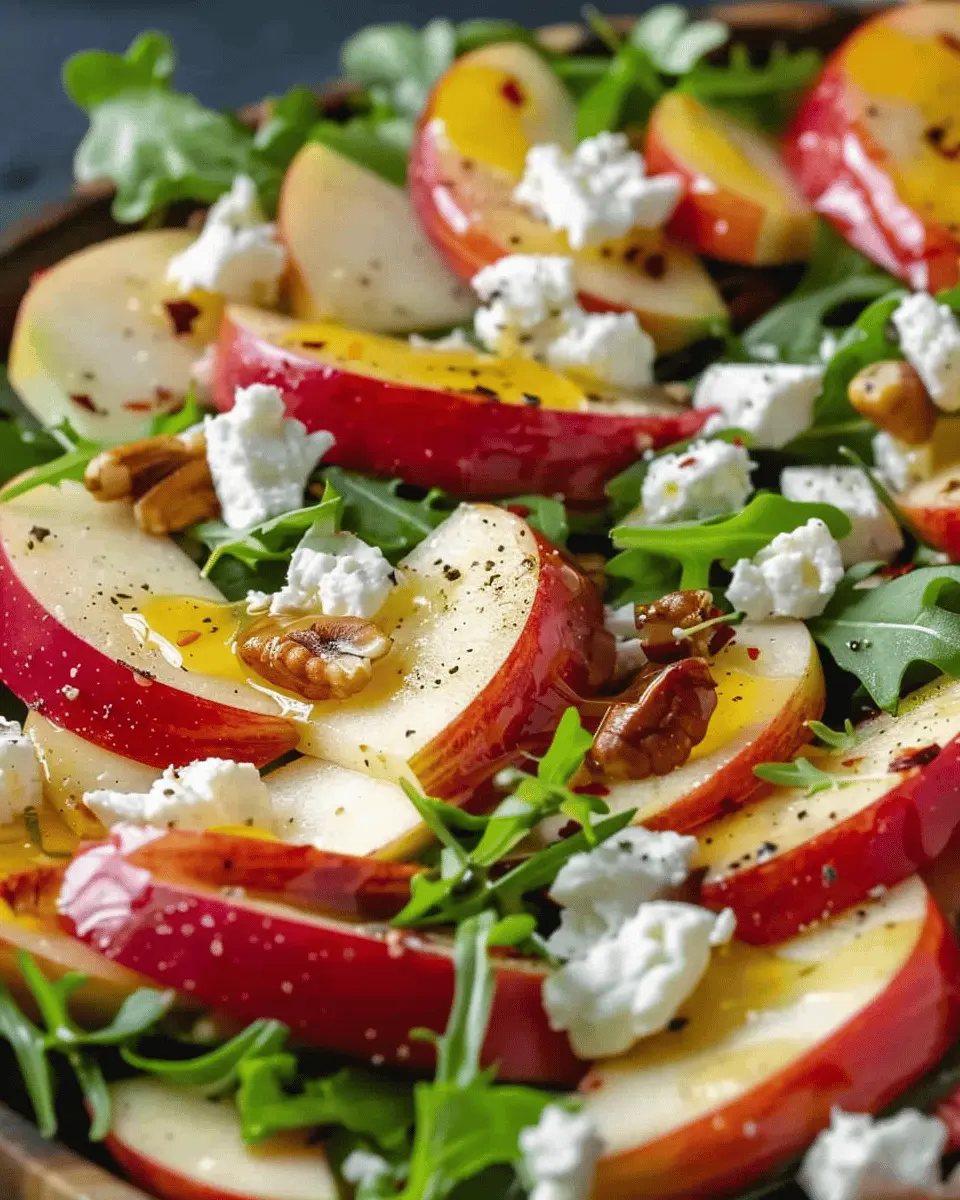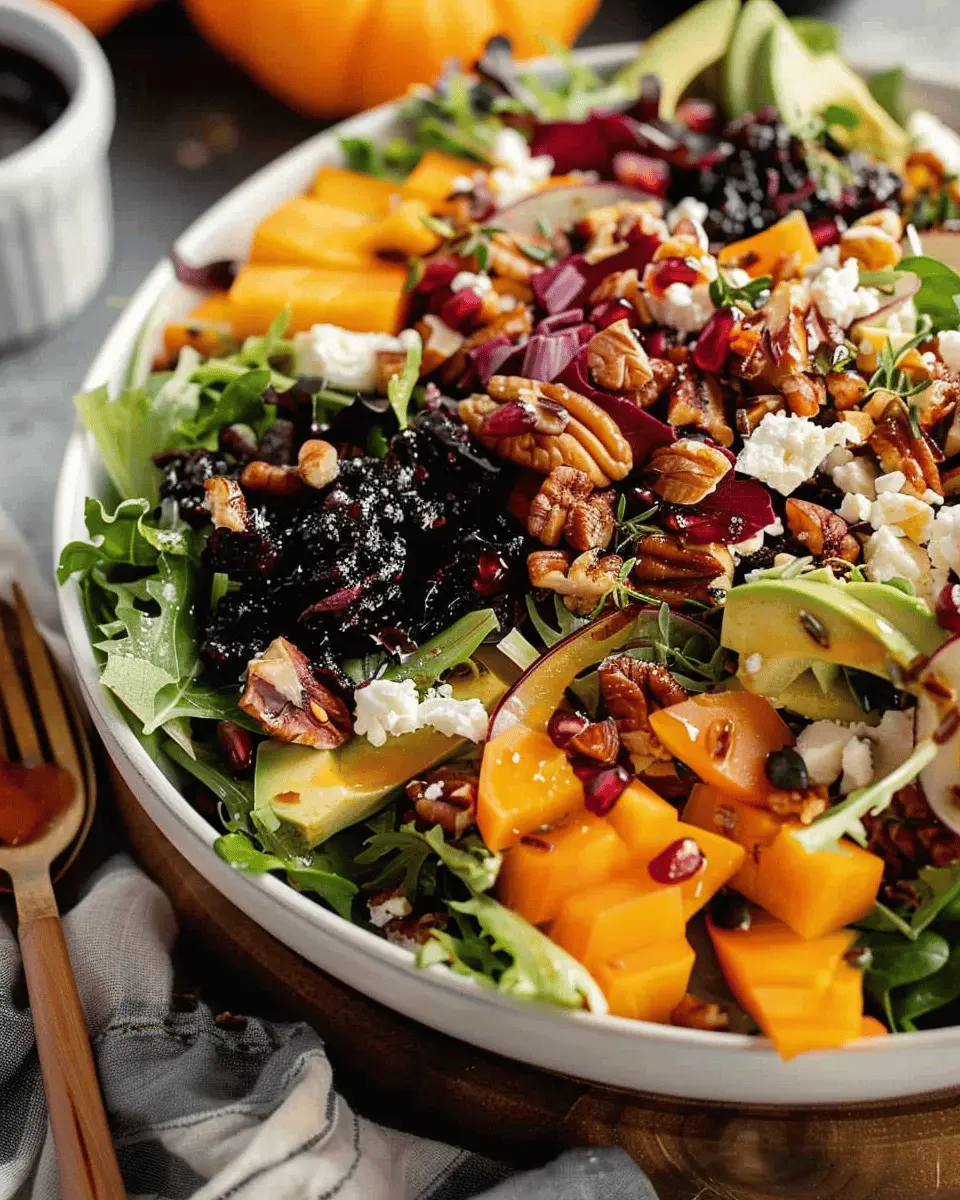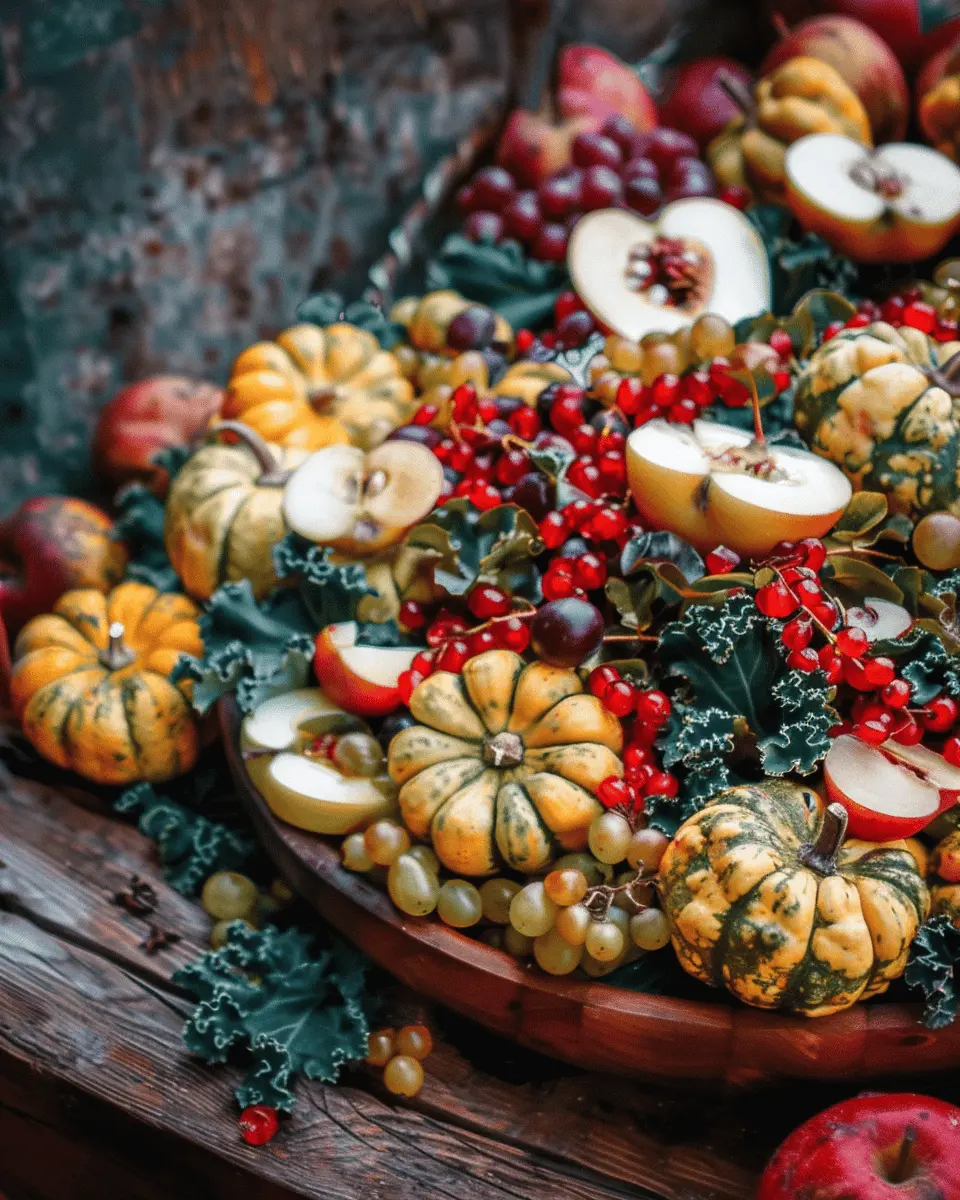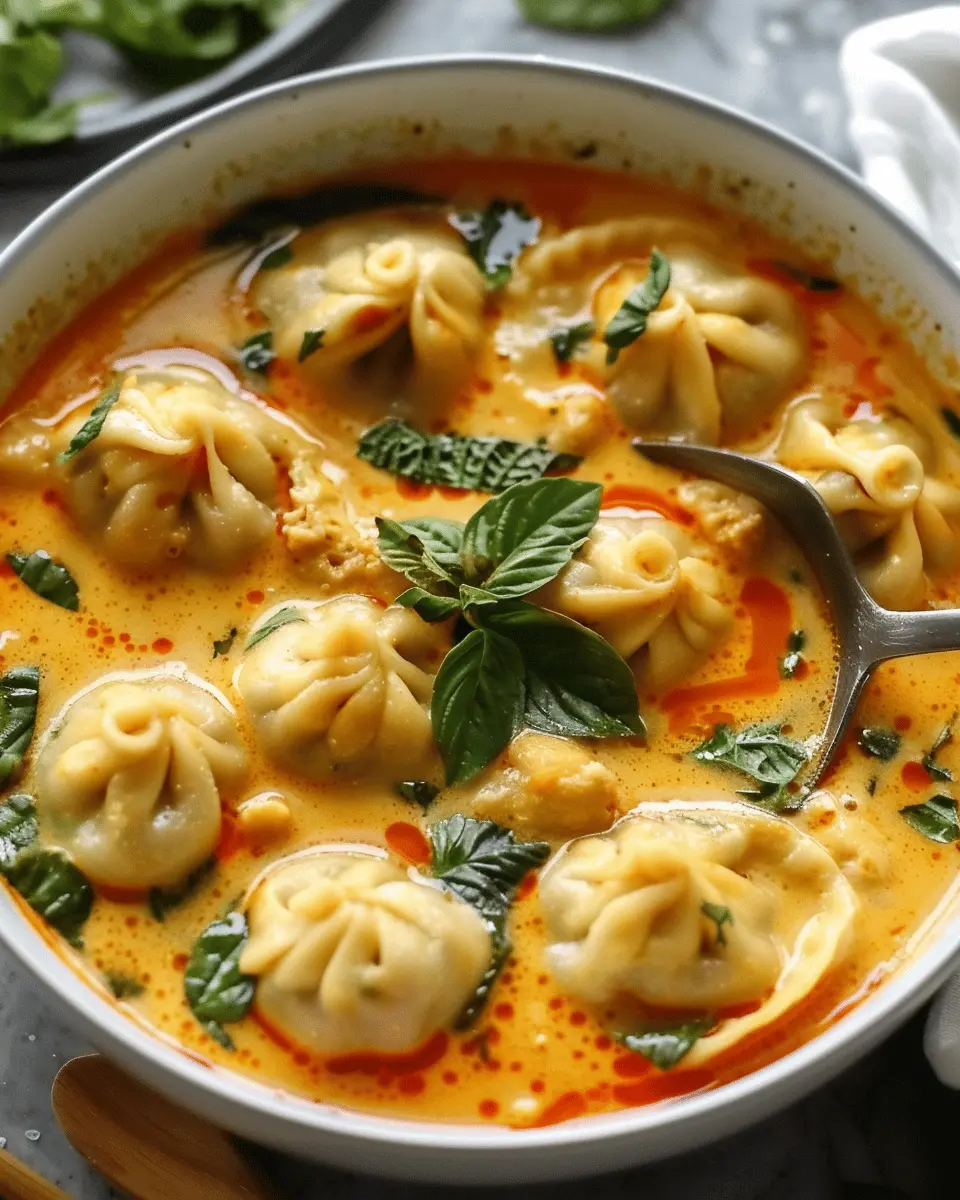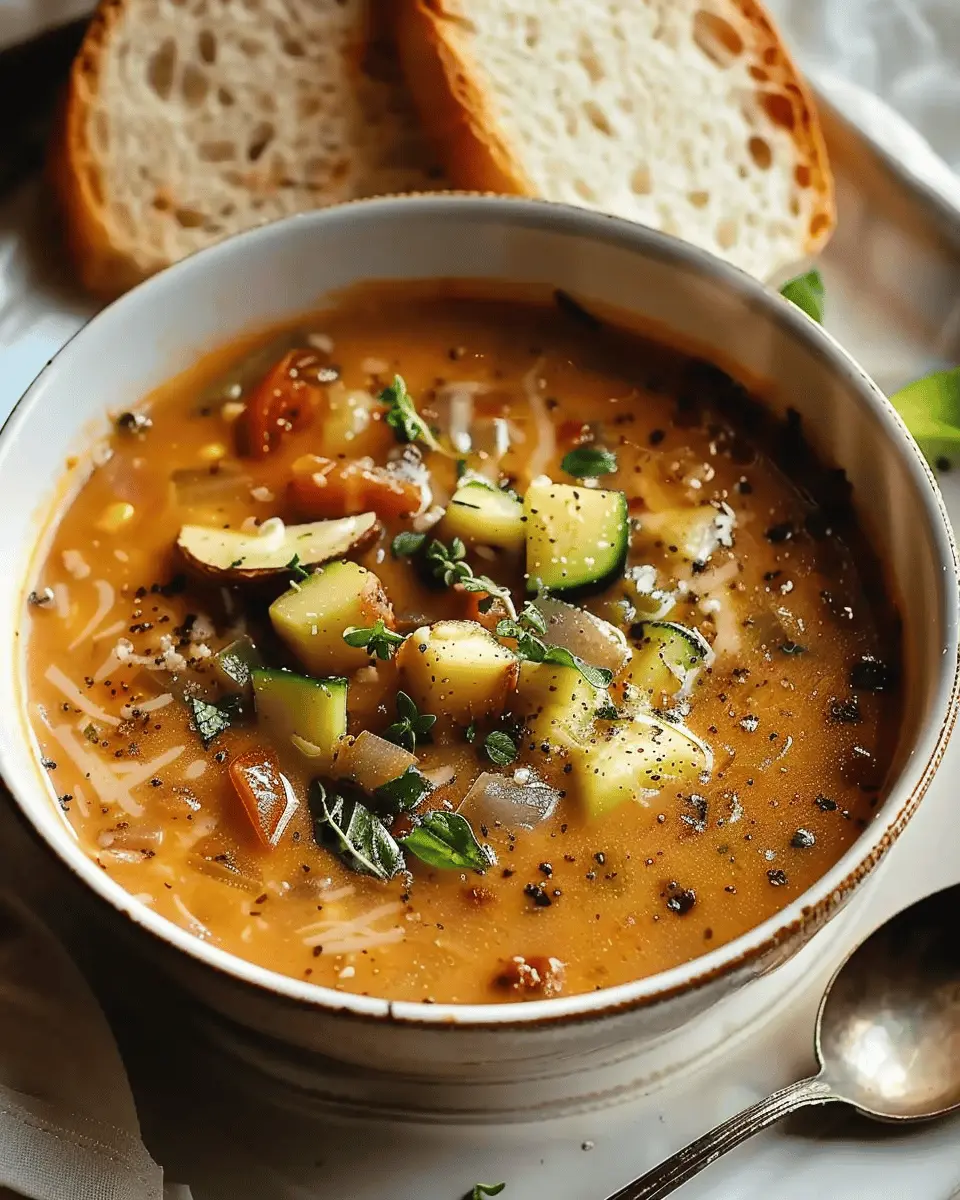Introduction to Traditional French Toast
When you think about breakfast favorites, traditional French toast undoubtedly takes a place at the top of the list. Often regarded as the ultimate comfort food, this dish combines simplicity and heartwarming deliciousness. Picture this: golden slices of bread soaked in a luscious mixture of eggs, milk, and vanilla, cooked to perfection, and then served with a drizzle of syrup or a dusting of powdered sugar. It’s a comforting morning ritual that transports you to cozy cafés in Paris or sunny brunches with friends.
Why Traditional French Toast is the Ultimate Comfort Food
There’s something undeniably soothing about traditional French toast. Perhaps it’s the warm, toasty aroma that fills your kitchen as it cooks. Or maybe it’s that first bite, where the crispy exterior gives way to a soft, custardy center. According to a study from the National Institutes of Health, comfort food is often linked to positive memories and can even boost your mood. Whether it reminds you of a leisurely weekend spent with family or that brunch date with friends, every bite tells a story.
Furthermore, versatility plays a major role in its appeal. You can easily customize your traditional French toast. Top it with fresh fruit, dollops of yogurt, or even a sprinkle of nuts for a satisfying crunch. The possibilities are endless! You can explore creative flavors by adding spices like cinnamon or nutmeg. Want a savory twist? Why not pair it with turkey bacon or chicken ham for a delightful contrast?
If you’re keen to dive deeper into this delightful dish, check out resources like Bon Appétit for variations on French toast that will inspire your culinary journey. Or explore the history of this classic breakfast on sites like Smithsonian Magazine to understand how it evolved to become a household favorite.
In essence, traditional French toast is not just a breakfast meal; it’s an experience that brings people together. So, gather your ingredients, invite some friends over, and prepare to indulge in one of life’s simple yet profound pleasures.

Essential Ingredients for Classic French Toast
Making traditional French toast is simpler than you might think, and the secret lies in using a few essential ingredients. Here’s what you’ll need:
- Bread: Choose thick slices of day-old bread, like brioche or challah, for a rich flavor and texture.
- Eggs: Use large eggs, as they bind everything together and create that signature custardy texture.
- Milk: Whole milk is perfect for richness, but feel free to use milk alternatives like almond or oat milk for a dairy-free option.
- Vanilla Extract: A splash adds a delightful sweetness that elevates the dish.
- Cinnamon: Just a dash for warmth and depth in flavor.
- Butter: For frying, giving your French toast that crispy, golden exterior.
Optional Ingredients for Extra Flavor
Want to take your traditional French toast to the next level? Consider incorporating these optional ingredients:
- Nutmeg: A hint of this spice can add a cozy aroma.
- Maple Syrup: Drizzling real maple syrup on top enhances the sweetness and complements the spices beautifully.
- Fruit Toppings: Fresh berries or sliced bananas not only look beautiful but also add a fruity freshness.
- Turkey Bacon or Chicken Ham: For a savory side that pairs perfectly with the sweetness of your toast.
By crafting your traditional French toast with these ingredients, you set the stage for a satisfying breakfast that’s perfect for any day. Ready to dive into the recipe? Let’s get cooking!
Step-by-Step Preparation of Traditional French Toast
Gather Your Tools and Ingredients
To start your journey into making traditional French toast, it’s essential to have your kitchen well equipped. Gather the following tools and ingredients to make the process smooth and enjoyable:
Tools
- A good mixing bowl
- Whisk or fork for mixing
- Shallow dish for soaking the bread
- Non-stick skillet or griddle
- Spatula for flipping
- Measuring cups and spoons
Ingredients
- 4 slices of thick-cut bread (preferably brioche, challah, or sourdough)
- 2 large eggs
- 1/2 cup of milk (or a dairy-free alternative)
- 1 tablespoon of sugar (optional, depending on your taste)
- 1 teaspoon of pure vanilla extract
- A pinch of salt
- Optional toppings: maple syrup, fresh fruits, or Greek yogurt
- Turkey bacon or chicken ham for a savory side
Having everything in place not only helps simplify the cooking process but also makes it more enjoyable. Did you know that the choice of bread can significantly impact the texture and flavor? Bread with some ‘stale’ qualities absorbs the custard mixture more effectively.
Whisking the Custard Mixture
Now it’s time for one of the most important steps: creating the custard that will transform your bread into traditional French toast. In your mixing bowl, combine the following ingredients:
- 2 large eggs
- 1/2 cup of milk
- 1 tablespoon of sugar (if using)
- 1 teaspoon of pure vanilla extract
- A pinch of salt for enhancing flavors
Using a whisk or fork, mix these ingredients until they’re well combined. The key here is to beat the eggs until they’re light and frothy—this helps achieve a lovely texture. This custard is where the magic happens, so don’t rush through this step.
You can even consider adding a touch of cinnamon or nutmeg for extra depth of flavor—who wouldn’t love a hint of spice in their morning routine?
Soaking the Bread: Techniques for Optimal Absorption
For the perfect traditional french toast, you need to soak the bread in the custard mixture adequately. Here’s how to do it right:
- Place your slices of bread in a shallow dish (the custard should cover the bread without pouring out).
- Pour the mixture over the bread and let it sit for about 30 seconds on each side. You’re aiming for the bread to be saturated but not falling apart.
For extra absorption, you might try a few gentle presses on the bread with a fork or the back of a spatula. This technique ensures that each slice is fully infused with the custard, leading to a wonderfully rich texture.
Cooking Options: Stovetop vs. Oven-Baked
Now, you can decide how you want to cook your traditional French toast. While a stovetop skillet is the classic approach, the oven-baked option is great if you’re making a large batch.
Stovetop Cooking:
- Heat a non-stick skillet over medium heat and add a small pat of butter or a drizzle of oil.
- Once the butter is melted and bubbly, place the soaked bread slices in the skillet.
- Cook for about 2-3 minutes on each side, adjusting for your desired level of doneness.
Oven Baking:
- Preheat your oven to 375°F (190°C).
- After soaking, place the bread on a baking sheet lined with parchment paper.
- Bake for about 15-20 minutes, flipping halfway through.
Both methods yield delicious results, so go with what suits your style!
Achieving the Perfect Golden Brown Finish
The last step in creating your traditional French toast is achieving that iconic golden-brown finish. Pay close attention during cooking:
- If you’re using the stovetop, watch for a golden hue and a slight crisp on the edges. You might even sneak a taste test!
- For oven baking, a timer is your best friend. Check for that beautiful, even browning.
Once done, serve your toast hot, topped with your favorite additions like maple syrup and fresh fruits. Consider pairing it with turkey bacon or chicken ham for a balanced meal.
Now, you’re ready to impress your friends or enjoy a cozy breakfast at home with your traditional French toast! For more creative recipes and expert tips on breakfast favorites, check out this link for delicious ideas. Enjoy your culinary adventure!

Variations on Traditional French Toast
When it comes to traditional French toast, there’s no limit to the delicious variations you can explore. Let’s dive into two scrumptious twists that are sure to impress your brunch guests.
Stuffed French Toast: Adding a Creamy Surprise
Why settle for plain when you can have stuffed? This variation turns traditional French toast into an indulgent dish that’s bursting with flavor.
Ingredients you’ll need:
- Thick slices of bread (brioche or challah works beautifully)
- Cream cheese or mascarpone
- Fresh fruits, like strawberries or blueberries
- A drizzle of maple syrup or honey for that finishing touch
To make, spread your choice of cream cheese or mascarpone between two slices of bread, filling it with the fresh fruits. Dip in your classic egg mixture, and cook until golden brown. The creamy center becomes a delightful surprise that takes every bite to a whole new level.
Savory French Toast: A Twist with Cheese and Herbs
Looking to swap out sweetness for something with a savory kick? Say hello to savory French toast! This version is a delightful alternative that incorporates ingredients like:
- Shredded cheese (cheddar or feta for great flavor)
- Fresh herbs (think chives or parsley)
- Turkey bacon or chicken ham for protein
Mix the eggs with herbs and cheese, then dunk your bread slices before cooking. The salty goodness of the cheese, combined with the crunch of the turkey bacon, brings an unexpected yet delectable twist to traditional French toast.
Which variation will you try first? Whether you prefer sweet or savory, these options are sure to elevate your breakfast game! For more ideas on breakfast creativity, check out Food & Wine for a host of unique recipes.
Cooking Tips and Notes for Traditional French Toast
How to Get Extra Crispy Edges
Achieving crispy edges on your traditional French toast can make all the difference. Here are a few tips to ensure perfection:
- Use a hot pan: Preheat your skillet over medium-high heat before adding butter or oil. This ensures a nice sear.
- Butter blend: Try mixing butter with a splash of vegetable oil. The oil increases the smoke point, helping you avoid burning while still getting that golden-brown look.
- Bread thickness: Opt for thick slices, ideally about one-inch thick. This allows the center to stay custardy while the outside gets crispy.
Importance of Fresh Bread vs. Day-Old Bread
When it comes to making traditional French toast, choosing the right bread is crucial. Fresh bread tends to be too soft and can become too soggy when soaked. On the flip side, day-old or slightly stale bread soaks up the egg mixture beautifully without falling apart.
For the best results, aim for breads like Challah or Brioche, which not only add sweetness but also a delightful texture. If you’re in a pinch, toast fresh bread lightly before soaking it to mimic day-old bread’s sturdiness. Check out Serious Eats for more bread tips to elevate your dish further!

Serving Suggestions for Traditional French Toast
Toppings that Elevate Your French Toast Experience
Ready to take your traditional French toast to the next level? Toppings play a pivotal role in transforming this classic dish. Here are some ideas that will make your taste buds sing:
- Fresh Berries: Strawberries, blueberries, or raspberries add a burst of flavor and vibrant color.
- Whipped Cream: A dollop of homemade whipped cream can add that decadent touch.
- Nut Butter: Almond or peanut butter drizzled on top for a nutty kick that’s both satisfying and protein-rich.
- Maple Syrup: Classic, but don’t forget to warm it up for an extra cozy feel on cooler mornings.
Mix and match these toppings to create your own masterpiece. If you’re interested in health benefits, check out Healthline’s article on nut varieties and their perks that can enhance your meal experience.
Creative Sides to Serve with French Toast
Pairing sides with your traditional French toast can make brunch extraordinary. Consider these options to bring balance to your plate:
- Turkey Bacon: A delicious and healthier alternative, crispy turkey bacon adds a nice salty contrast.
- Chicken Ham: For a savory element, opt for chicken ham that complements the sweetness perfectly.
- Fruit Salad: A refreshing fruit salad provides a bright counterpoint to the richness of French toast.
- Yogurt Parfait: Layered yogurt with granola and fruit can add texture and a creamy element that works wonders.
These sides not only enhance the meal but also provide a well-rounded dining experience. So grab some friends, set the table, and enjoy your traditional French toast with these delightful suggestions!
Time Breakdown for Traditional French Toast
Making traditional French toast is as simple as it is delicious. Here’s how you can break down the time required to whip up this delightful breakfast treat:
Preparation Time
Getting everything ready takes about 10 minutes. You’ll want to gather your ingredients, such as eggs, milk, bread, and your favorite seasonings like cinnamon and vanilla. This is a great time to prep your toppings too—think fresh berries or a drizzle of maple syrup.
Cooking Time
The cooking process takes about 15 minutes. While the pan heats, whip those eggs and milk into a creamy mixture. Once the bread hits the pan, it’s all about getting that golden-brown perfection.
Total Time
In total, you’re looking at around 25 minutes from start to finish. Not bad for a pleasant morning meal! If you want to explore more breakfast options or even variations of traditional French toast, check out this article for inspiration. Enjoy your tasty adventure!
Nutritional Facts for Traditional French Toast
When indulging in traditional French toast, it’s always a good idea to consider its nutritional profile. Here’s a quick breakdown of what you’re getting with each serving:
Calories
A serving of traditional French toast typically contains about 200-300 calories, depending on the ingredients and toppings used. Keeping an eye on portions can help you enjoy this delightful dish without going overboard.
Protein
You’ll find around 6-8 grams of protein per serving. Adding a side of turkey bacon or a sprinkle of nuts can boost this number, making your breakfast more satisfying and keeping you energized throughout the morning.
Sugar Content
The sugar content varies widely, especially with toppings like syrup or powdered sugar. On average, you might see about 10-15 grams of sugar in each serving, so consider using fresh fruits or a drizzle of honey for a sweeter touch while managing your sugar intake.
For more detailed nutritional information, you might find resources useful, such as the USDA FoodData Central or the American Heart Association. Enjoying traditional French toast thoughtfully means savoring each bite while being mindful of your dietary choices!
FAQs about Traditional French Toast
Can I prepare the custard mixture the night before?
Absolutely! Preparing the custard mixture ahead of time is a great idea. Not only does it save you time in the morning, but it also allows the flavors to meld together even better. Simply whisk together the eggs, milk, vanilla, and cinnamon, then store it in an airtight container in the refrigerator overnight. Just give it a good stir before dipping your bread in the morning!
What’s the best type of bread for French toast?
When it comes to making traditional French toast, the type of bread you use can make all the difference. A thicker bread, like brioche or challah, is ideal due to its ability to soak up the custard without falling apart. That said, you can also experiment with sourdough or even a hearty whole-grain bread for added flavor and texture. Consider picking bread that’s a day or two old, as it will absorb the mixture more effectively.
How can I make French toast gluten-free?
Making a gluten-free version of traditional French toast is simpler than you might think! There are numerous gluten-free bread options available on the market today. Look for brands that use whole grains or seeds for added nutrition. You can also make your own gluten-free bread if you’re feeling adventurous. Just ensure that your custard mixture is gluten-free by using gluten-free flour if you decide to incorporate any thicker sauces or toppings.
For more in-depth gluten-free recipes, check out Gluten-Free Living to get inspired!
French toast is one of those delightful meals that can bring warmth and comfort to any breakfast or brunch table. With a little preparation and the right ingredients, you’ll have a dish that not only tastes fantastic but is also suitable for everyone’s dietary needs.
Conclusion on Traditional French Toast
Why You Should Try Making Traditional French Toast at Home
Making traditional French toast at home is not just a kitchen task—it’s an experience! Think about waking up to the intoxicating aroma of cinnamon and vanilla wafting through your home. This dish is not only quick and easy but also incredibly versatile.
You can elevate the basic recipe by pairing it with fresh berries, Greek yogurt, or a drizzle of maple syrup. Plus, customizing the ingredients to your taste opens up endless possibilities! A homemade breakfast can be far more satisfying than any café experience.
So why not treat yourself and your loved ones? According to the Academy of Nutrition and Dietetics, cooking at home also allows you to control ingredients and portions while saving money. Try making this delightful dish—your mornings will thank you!
PrintTraditional French Toast: The Best Indulgent Recipe with Turkey Bacon
A delicious and indulgent traditional French toast recipe paired perfectly with turkey bacon.
- Prep Time: 10 minutes
- Cook Time: 15 minutes
- Total Time: 25 minutes
- Yield: 2 servings 1x
- Category: Breakfast
- Method: Pan-frying
- Cuisine: French
- Diet: Gluten-Free
Ingredients
- 4 slices bread
- 2 large eggs
- 1/2 cup milk
- 1 teaspoon vanilla extract
- 1/2 teaspoon ground cinnamon
- 1 tablespoon butter
- 4 slices turkey bacon
Instructions
- In a bowl, whisk together eggs, milk, vanilla, and cinnamon.
- Heat a skillet over medium heat and add butter.
- Dip each slice of bread into the egg mixture, ensuring both sides are coated.
- Cook the bread in the skillet until golden brown on both sides, about 2-3 minutes per side.
- In a separate pan, cook turkey bacon until crispy.
- Serve the French toast hot with turkey bacon on the side.
Notes
- For extra flavor, add a pinch of nutmeg to the egg mixture.
- Serve with syrup, powdered sugar, or fresh fruit.
Nutrition
- Serving Size: 1 slice
- Calories: 300
- Sugar: 5g
- Sodium: 400mg
- Fat: 15g
- Saturated Fat: 5g
- Unsaturated Fat: 8g
- Trans Fat: 0g
- Carbohydrates: 30g
- Fiber: 2g
- Protein: 12g
- Cholesterol: 150mg
Keywords: Traditional French Toast

